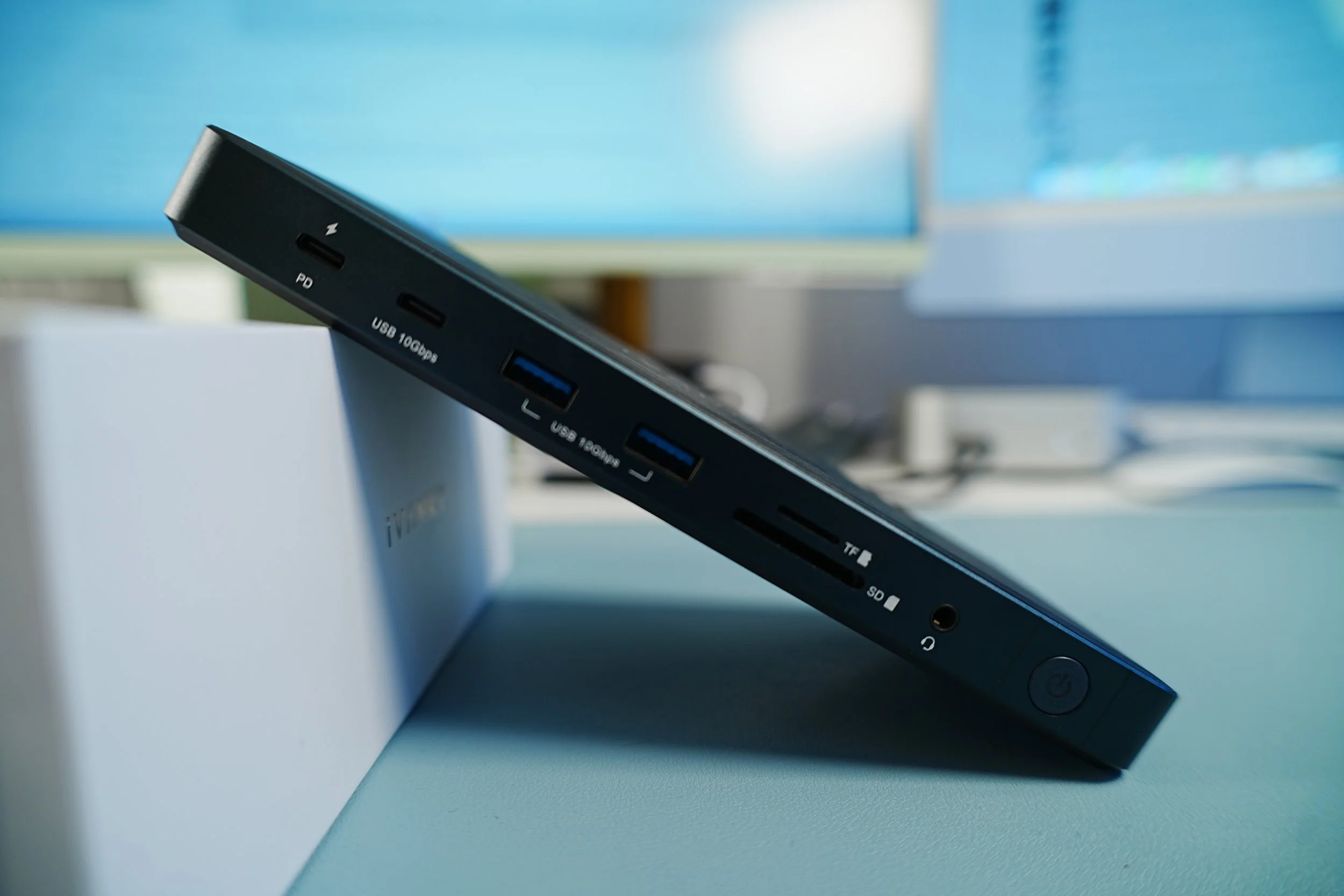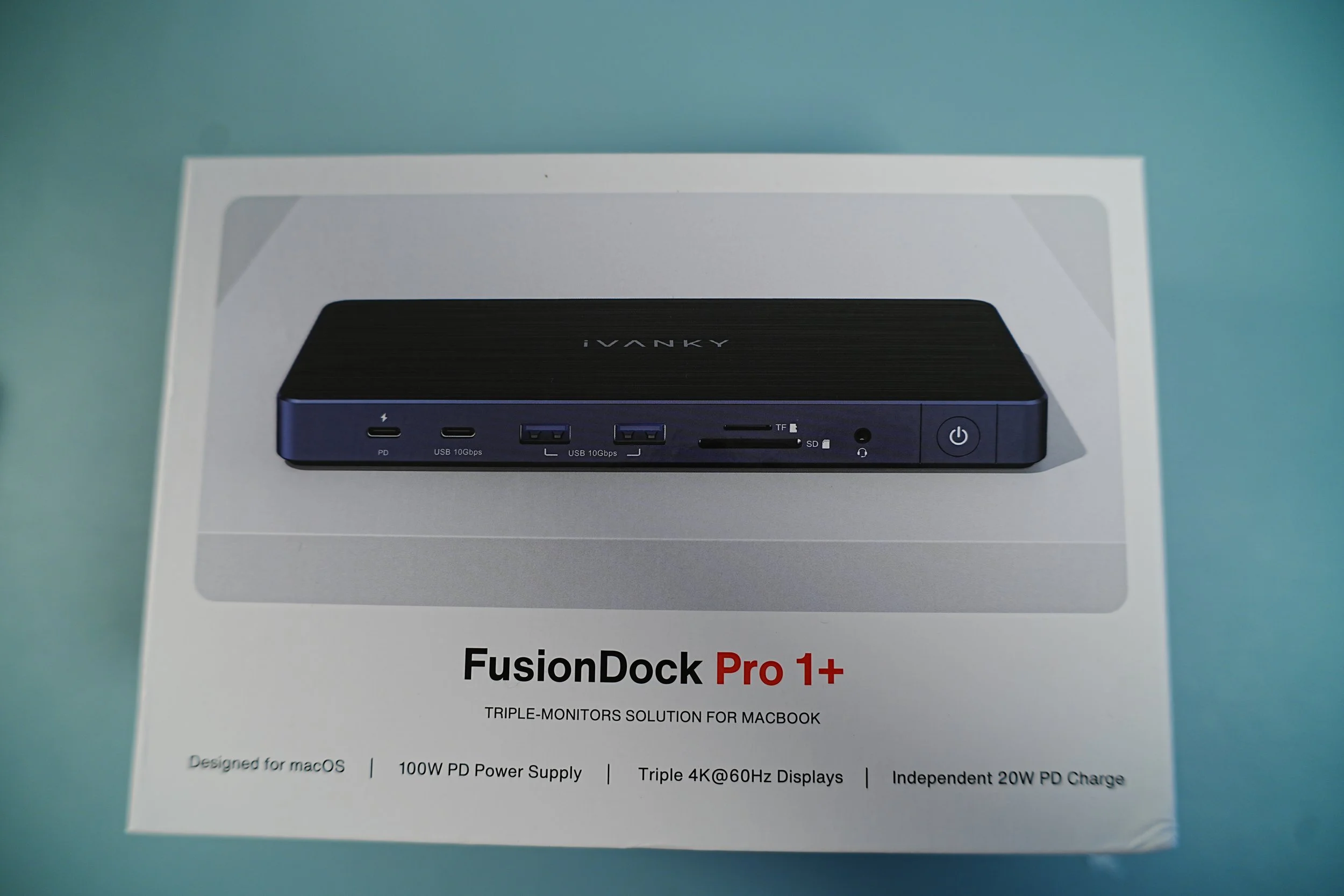iVanky Fusion Dock 1+ Review
In the market for a high performing MacBook dock? Check out iVanky’s Fusion Dock Pro 1+
Our desk setups at home and in the office have become ever increasingly complex, with multiple monitors, hard drive’s, and receivers, etc., plugged in. There are many different solutions thought up by lots of different manufacturers, but some of them are not so good and don’t help! I recently was contacted by iVanky, and they asked me if I would be interested in reviewing their top-of-the-range MacBook Pro dock, which I said yes to because I had been looking for a dock for some time. The dock retails for around £299, which, considering its performance and features, seems to be about right, but does put it at the top end at full retail price. There are regularly offered prices, so please check out iVanky’s website for any current deals.
Well designed and thought out
The iVanky FusionDock Pro 1+ arrived last week, and I have been putting it through its paces ever since. As a video creator, I needed something that would enable me to transfer files around quickly, as well as provide a good output wattage for my laptop because I always need it charged up so I can disappear at a moment’s notice. As soon as I unboxed the iVanky, I knew this was going to work well for me as it comes bundled with a 180W power supply, meaning it should be able to power plenty of devices at high output (and it can).
Design:
The dock is made from plastic and metal and has a reasonable weight to it. I think it’s just the right size to fit under a shelf or monitor on your desk, so it blends into my workflow well. On the rear side, you have the DC power input, a 2.5GBPS Ethernet port, 2 USB-A low-speed ports, and 3 HDMI 60Hz max output ports. Then on the front, there are two USB-C ports (one is PD enabled for charging phones quickly), 2 USB-A high-speed 10GBPS ports, an SD/TF Card reader, and a 3.5mm headphone jack.
Plenty of ports on offer
Therefore, we have plenty of connectivity options, which is great because you can simply dock your laptop in a stand behind the desk, connect it to the dock with one single USB-C cable (included), and it will then run all this off one cable. If you have, say, two or three monitors, this could be a game changer for you, as it will output to all those monitors easily through that one cable. The dock’s main selling point is that you can connect any MacBook M1,2 and 3 model to three monitors by downloading DisplayLink software, so it will trick the MacBook to output to three displays instead of one or two as listed on the usual Mac specs. I think this is a great idea as Apple forces you to buy the Max chips to just get more than two monitors supported, so it will save people money in the long run.
The dock is marketed as a Mac dock and will work with any Apple Silicone computer essentially. It says Windows laptops aren’t supported, but as a simple dock, it will work fine with any Windows machine (I have tried and tested it). You won’t get the DisplayLink feature, but if your Windows laptop supports multiple HDMI outputs, then some of the HDMI ports will still work.
Performance:
The dock, as mentioned, has a 180W power input, so it can charge your laptop up to 100W and 20W on the front PD port for your phone, so all nice and quick, and I found in testing this worked out to. Altogether, there are 14 ports to choose from, which is about right in this price bracket.
I had no issues in setting up the dock at all. It was easy to plug everything in and download the software, and then I had multiple monitor support off the dock. I tried moving files around from my external hard drives and my SD cards, and all worked fine with super-fast transfer speeds. The fastest speed supported is 10GBPS, which isn’t as fast as other docks available, but in real-world testing, the dock performed more than fast enough for my needs. I transferred about 20GB of video files to my computer in about one minute, which is much faster than my older SD card reader.
The dock, as mentioned above, is unique in offering more than two monitor support for all MacBook M series chips. By using software trickery, it can output to three monitors at 60hz from any M class chip, which is the biggest selling point. During initial testing, this worked fine, but I need longer to make sure I don’t run into any issues (as can be the case with third-party software).
The dock also has safety in mind and comes with overheat and overvoltage protection. During my testing, it did get warm, but never felt hot, so I feel confident in its safety profile. If I encounter any issues, I will post these on this article to make sure I keep everyone up to date.
In conclusion, the iVanky Fusion Dock 1+ is worth checking out if you are in the market for a high-performance MacBook dock. So far, it has performed as advertised and was easy to get set up and running. If you are just a Windows user, I would look elsewhere as it’s expensive because you don’t get the DisplayLink feature, but if you have both Windows and Mac, it will work well with both.



